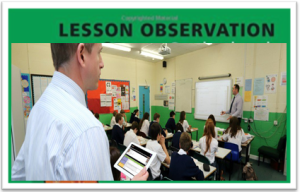Characteristics of Good Lesson Plan and how to organize the lesson is being discussed in this article.Teachers have very little time but good lesson planning can help them save time in creating interesting and engaging lessons for their class.
The general characteristics of a lesson from an art point of view may be stated to be.
(1) A distinct form.
The lesson has clearly marked parts; it is not a mere collection of unconnected facts but an orderly development,the information being systematized and bound together on a definite plan- Some clearly worked out design there must be, but this is quite a distinct thing from having an artificial stereotyped form for all lessons. The beginning, middle, and end, must be recognizable in the treatment of the subject-matter, not merely by sequence in time. Every fact must be necessary to the view taken, must have a distinct place in the scheme, and there must be a reason for that place. The form of a well-constructed lesson will be as evident as that of a logical argument.
(2) Unity of Idea.
The lesson is governed by a clearly realized aim, and shows a central line or axis of progressive thought and fact, round which all the other ideas group themselves naturally in proper relationship of interdependence and relative importance. The facts are coherent, and are, as it were, made to face all one way in order to bring out strongly the general effect, and give completeness of view as far as the work extends. There is no muddling up of several views of the same subject; the lesson tells its own story distinctly, and is so arranged that not only has every point a meaning in itself, but a meaning also as a part of a larger whole.
(3) Harmony of effect.—
Everything is in keeping with the general design—in agreement with the style, tone, and substance of the teaching. There are no antagonistic or discordant elements, but each part aids in the realization of the rest. The mode of presentment is consistent throughout, and is suited to that which has to be taught. There is no grotesque treatment of grave matters, no over-weighting of trivial ones. The facts are put forward in as striking, forcible, and picturesque a manner as possible, but are kept strictly within the limits of truth.
(4) Proportion and Symmetry.—
Each part is treated proportionately to its importance, and stands out accordingly. The mind grasps readily the outline of the knowledge presented; no point is allowed to obtrude itself unduly, and illustrative matter is kept in its proper place. There is no purposeless digression into irrelevant matters, no over-development of one portion of the lesson, and hasty scampering over another. The facts are arranged symmetrically, and grouped into divisions, which, as nearly as can be naturally secured, balance one another. Thus the pauses for recapitulation and summing up occur at about equal intervals of time.
(5) Variety in detail.
While it is important that the central line of thought should be distinctly marked, there must be plenty of variety in the subject-matter and in the mode of treatment to prevent dullness in the teaching, and consequent weariness on the part of the pupils. Sufficient diversity in detail there must be in any work of art if it is to engage attention ; and children are especially influenced by the varied nature of the facts brought before them, and by versatility in the manner of presentment. There must be no sameness, no monotony ; one teaching device may be made to afford relief to another, illustrations may be drawn from different sources, facts may be approached in a diversity of ways, and even repetition may often usefully be conducted in a changed form.
(6) Originality.
No one cares much for mere copies. It is a source of pleasure to have a thing put for us in an original way. The new view is attractive, and we like to be able to recognize the action of the artist’s own mind. So with teaching : mere imitation of some one else’s plan is pretty sure to be wanting in any strong elements of success. A properly contrived lesson will exhibit originality of thought and invention, of power to lift the subject out of the region of the commonplace. The teacher will by the freshness of his treatment, the novelty of his arrangement and illustrations, and the aptness of his language, invest it with quite new interest.
Perfection of Workmanship.
The lesson will be marked by thoroughness. Each point will be taught with skill and ease as far as is necessary, and will be arrived at in the shortest way. There will be no over-elaboration, no attracting of attention to the means whereby the results are reached, no waste of effort, and the whole will be accomplished without the work being felt burdensome by either teacher or taught.
We may perhaps usefully but very briefly sum up these points thus : A skilfully perfected lesson, of a type intended to train as well as instruct, will be distinguished by having a definite form, in which there is a reason for the order and grouping of every part; it will be dominated by some leading thought around which the other ideas cling naturally ; there will be sufficient variety both of subject-matter and treatment to interest the children and give them completeness of conception; the facts will all be so arranged as to harmonise with one another, and fit into the scheme in a way which will produce a proportionate and symmetrical whole ; and lastly, there will be ample evidence that lesson has passed through the crucible of the teacher’s mind.
